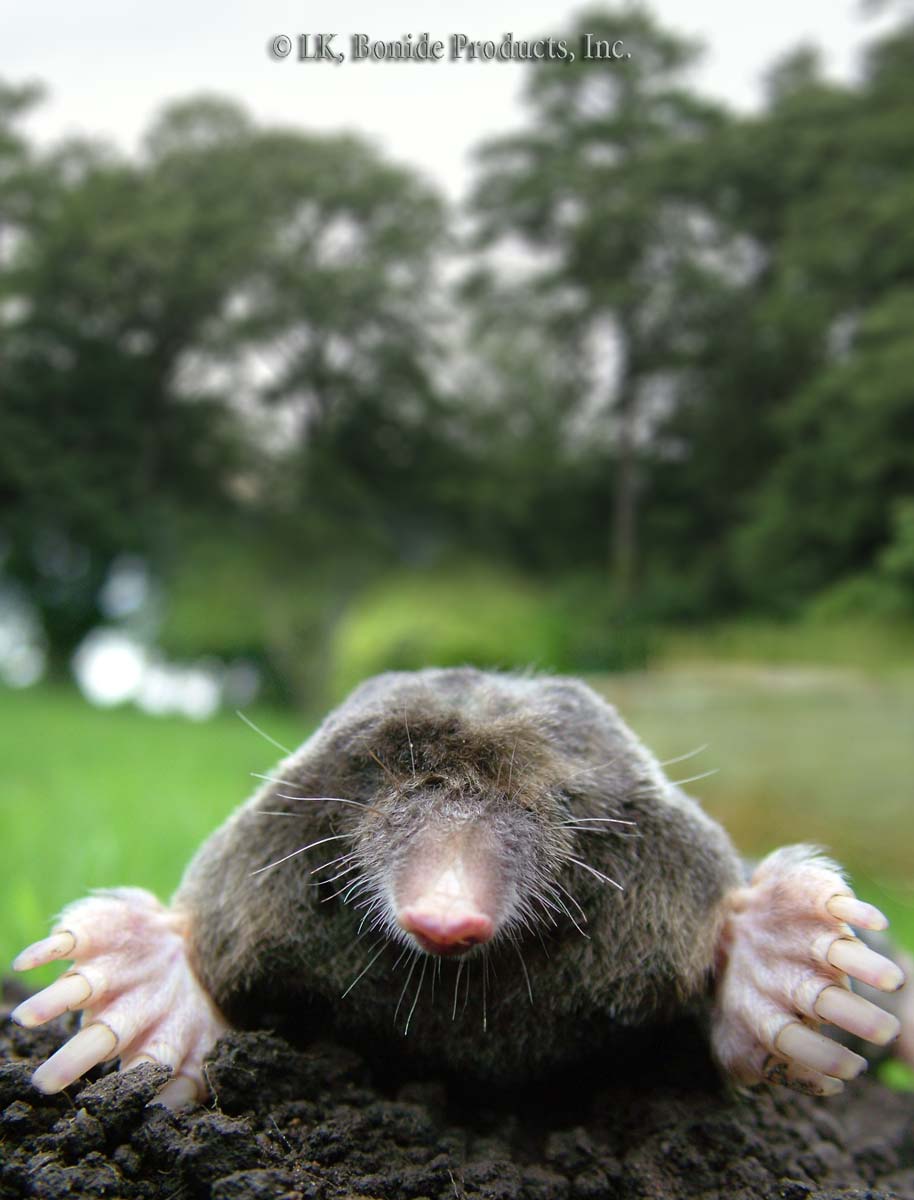
Ridges formed in soft, moist earth and volcano-shaped mounds of finely pulverized soil with holes in the center are sure signs of a mole invasion. These pests are insectivores, not rodents; they don’t go after plants as food, but damage them while tunneling for insects and earthworms. About 5 to 7 inches long, moles have dark, velvety fur, a pointed snout, no visible ears or eyes, and outward-pointing claws for digging.
Surface feeding burrows (the ridges you’ll see) are used for short periods and may be abandoned soon after excavation; main runways are usually 8 to 18 inches below ground level. Most species are solitary. There’s often an eruption of activity in summer, as young moles, driven out to fend for themselves, dig new tunnel systems.
Soil-dwelling insects, earthworms.
Damage:Plants are heaved from the ground, roots are severed, and lawns are disfigured.
Control:Repellents, Moletox II, Grub Control.
Notes:Eliminating grubs that feed on lawn roots may discourage moles. Protect plants from moles by lining planting holes and beds with ½ inch diameter galvanized wire mesh. If your lawn suffers mole damage, try to salvage the ridged turf by pressing it back down right away, then watering thoroughly.






